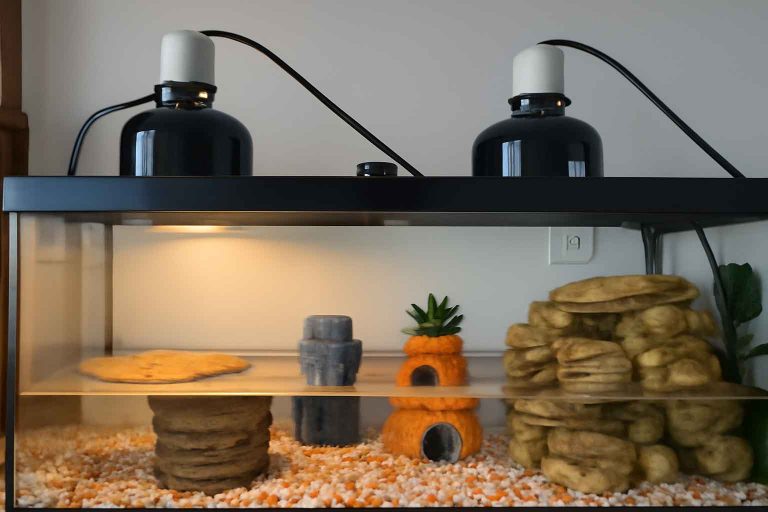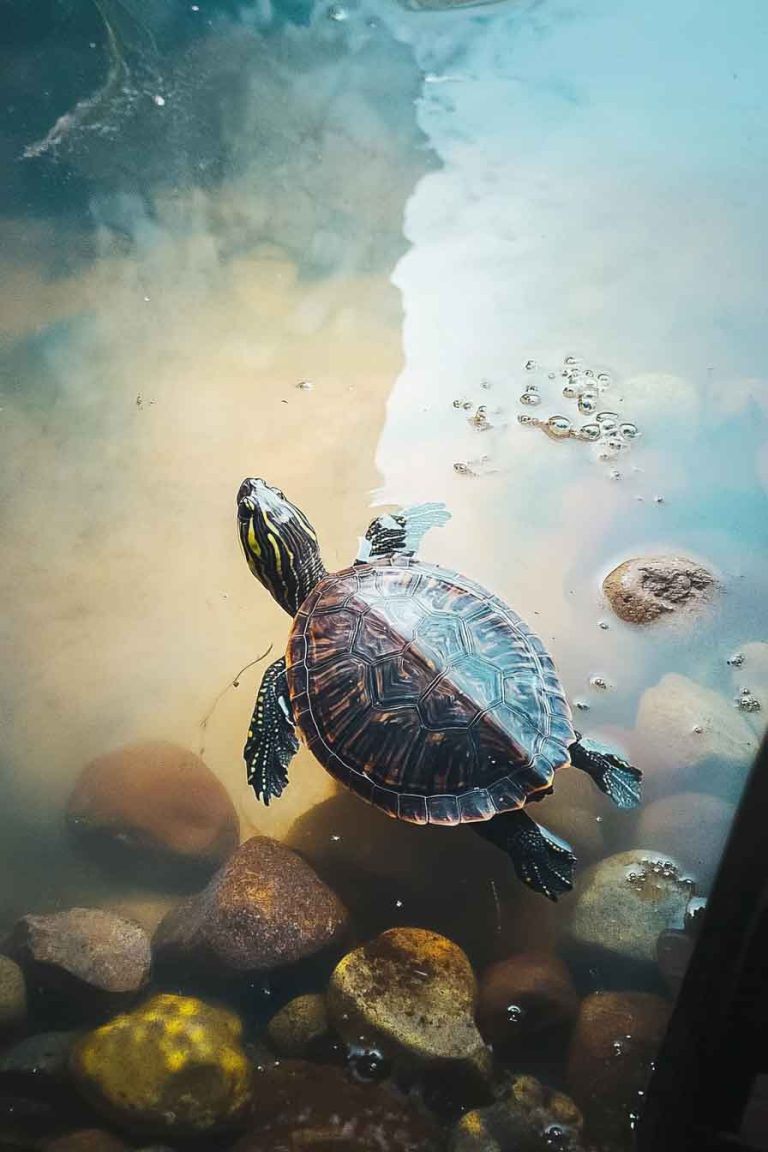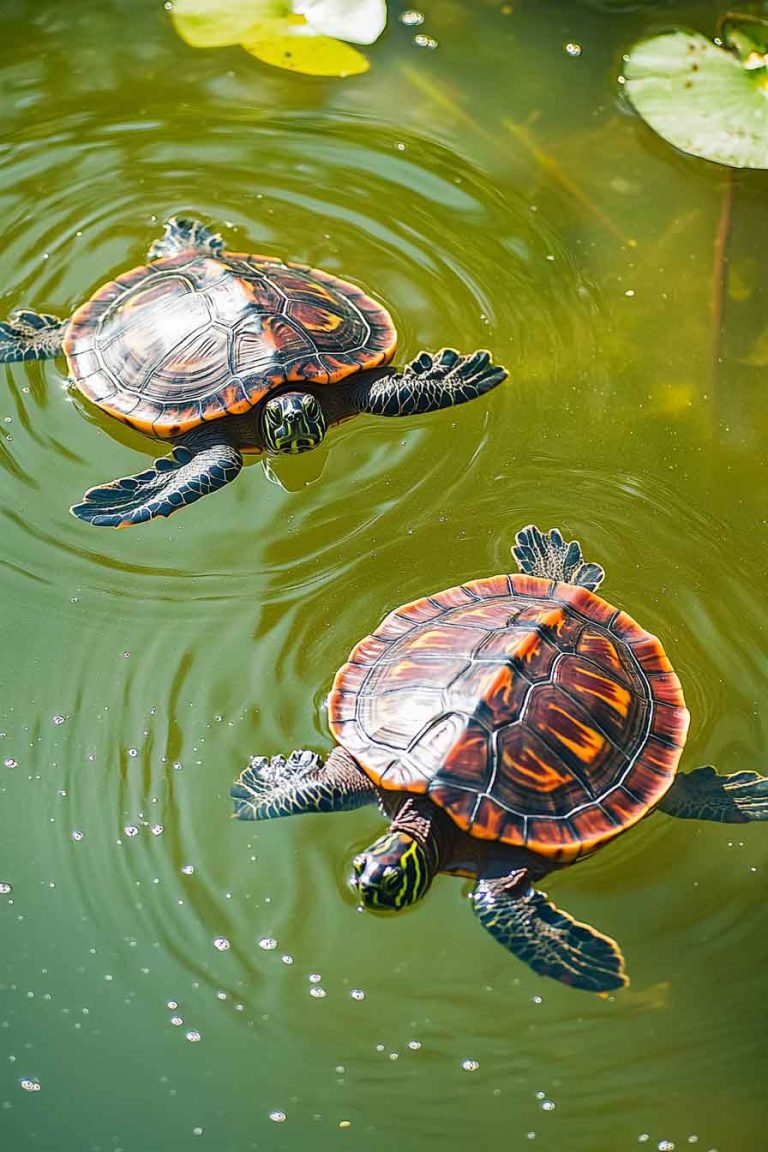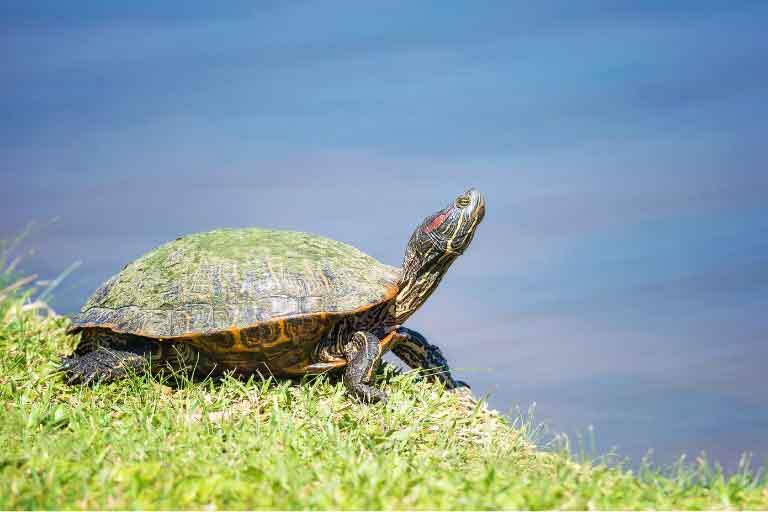Algae Eater In Turtle Tank: Will Your Turtle Stay With Sucker Fish?
Aquatic turtles are fascinating pets, and maintaining a clean tank is crucial for their health. One popular solution for controlling algae growth is introducing an algae eater, such as a sucker fish (commonly a plecostomus or similar species), into the turtle tank. But the big question is: will your turtle coexist peacefully with a sucker…
Aquatic turtles are fascinating pets, and maintaining a clean tank is crucial for their health. One popular solution for controlling algae growth is introducing an algae eater, such as a sucker fish (commonly a plecostomus or similar species), into the turtle tank. But the big question is: will your turtle coexist peacefully with a sucker fish, or could this lead to problems? We’ve researched this topic thoroughly to provide you with a comprehensive guide on whether these two species can share a tank harmoniously.
In this article, we’ll explore the compatibility of turtles and sucker fish, the benefits and risks of keeping them together, and the factors that influence their ability to coexist. We’ll also discuss how to set up a tank to ensure both your turtle and algae eater thrive.
Can Turtles and Sucker Fish Live Together?
In general, turtles and sucker fish can coexist in the same tank, but it’s not a guaranteed success. The compatibility depends on several factors, including the turtle’s species, size, temperament, and the specific type of algae eater. While sucker fish are known for their algae-cleaning abilities, they aren’t always the perfect tank mates for turtles due to differences in behavior and environmental needs.
Sucker fish, such as plecostomus (plecos), are peaceful bottom-dwellers that latch onto surfaces to feed on algae. Turtles, on the other hand, are often more active and can be territorial or predatory, especially as they grow. Some turtles may view the sucker fish as food or a nuisance, while others may ignore them entirely.
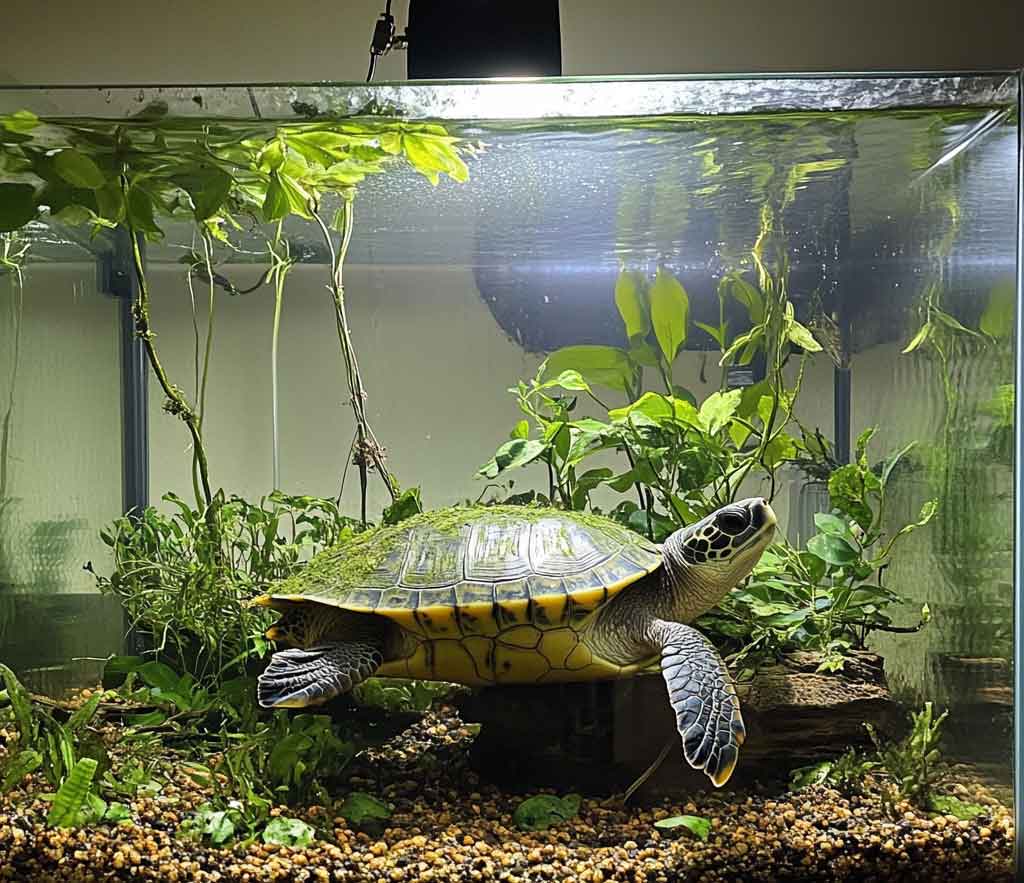
Benefits of Adding a Sucker Fish to a Turtle Tank
Introducing an algae eater to a turtle tank can offer several advantages:
- Algae Control: Sucker fish are highly effective at keeping algae growth in check, reducing the need for frequent tank cleaning.
- Low Maintenance: Plecos and similar fish are hardy and relatively easy to care for, making them a convenient addition.
- Aesthetic Appeal: A clean tank with less algae looks better and provides a healthier environment for your turtle.
However, these benefits come with potential challenges that need to be addressed to ensure a harmonious tank environment.
Risks of Keeping Turtles and Sucker Fish Together
While the idea of a self-cleaning tank is appealing, there are risks to consider when housing turtles and sucker fish together:
- Aggression from Turtles: Some turtle species, like red-eared sliders, can become aggressive toward tank mates, especially if they mistake the fish for food or feel crowded.
- Sucker Fish Behavior: Certain plecos may latch onto the turtle’s skin or shell, mistaking it for a surface to clean. This can irritate or stress the turtle.
- Size Disparity: As plecos grow (some species can reach over a foot in length), they may compete for space or food, leading to conflicts.
- Water Quality Issues: Both turtles and sucker fish produce waste, and combining them in a tank can increase the bioload, requiring more robust filtration.
To better understand how to make this combination work, let’s dive into the key factors that influence their compatibility.
Factors Affecting Turtle and Sucker Fish Compatibility
Several variables determine whether your turtle and a sucker fish can share a tank successfully. Paying attention to these factors will help you create a balanced environment for both species.
Turtle Species and Temperament
Not all turtles are equally suited to sharing their space. For example:
- Red-eared sliders: These turtles are known for their bold and sometimes aggressive behavior. They may chase or nip at fish, especially if hungry.
- Painted turtles: Generally less aggressive, painted turtles are more likely to coexist peacefully with sucker fish, though caution is still needed.
- Softshell turtles: These turtles are highly predatory and likely to view any fish as prey, making them poor candidates for tank mates.
Before adding a sucker fish, research your turtle’s species and observe its behavior. A docile turtle is more likely to tolerate a fish than a territorial or predatory one.
Size of the Turtle and Fish
The size of both the turtle and the sucker fish plays a significant role in their compatibility:
- Small turtles: Juvenile turtles are less likely to see a sucker fish as food, but they may still harass smaller fish.
- Large turtles: Adult turtles, especially those with strong jaws, may attempt to eat or injure a sucker fish, particularly if the fish is small.
- Sucker fish size: A small pleco (under 4 inches) is vulnerable to turtle aggression, while a larger pleco may be better equipped to hold its own. However, large plecos need ample space, which can be challenging in a turtle tank.
Choosing a sucker fish that’s appropriately sized for your turtle and tank is critical to minimizing conflicts.
Tank Size and Setup
The size and layout of the tank are crucial for ensuring both species have enough space to thrive:
- Tank size: Turtles require at least 10 gallons of water per inch of shell length, and adding a sucker fish increases this demand. A minimum of 75-100 gallons is recommended for a single turtle and a small pleco.
- Hiding spots: Sucker fish are nocturnal and need caves, driftwood, or other hiding spots to feel secure during the day. Without these, they may become stressed or vulnerable to turtle aggression.
- Basking area: Turtles need a dry basking platform, which should be separate from the fish’s territory to avoid competition for space.

How to Set Up a Turtle Tank with a Sucker Fish
To maximize the chances of your turtle and sucker fish coexisting peacefully, you’ll need to carefully plan and maintain the tank environment. Here are some practical steps to follow:
Choose the Right Sucker Fish
Not all algae-eating fish are suitable for a turtle tank. Common choices include:
- Common Plecostomus (Hypostomus plecostomus): A popular choice due to its algae-eating habits, but it can grow large (up to 24 inches), requiring a spacious tank.
- Bristlenose Plecostomus (Ancistrus spp.): Smaller than common plecos (4-6 inches), bristlenose plecos are less demanding in terms of space and are less likely to outgrow the tank.
- Otocinclus Catfish: These small fish (1-2 inches) are great algae eaters but are more delicate and may not fare well with aggressive turtles.
Select a species that matches your tank size and your turtle’s temperament. Avoid fish that are too small or fragile, as they’re more likely to be harassed or eaten.
Optimize Tank Conditions
Both turtles and sucker fish have specific environmental needs, and the tank must accommodate both:
- Water temperature: Turtles thrive in water between 75-85°F, while most plecos prefer 72-80°F. Aim for a temperature around 76-78°F to suit both.
- Filtration: Turtles are messy, and adding a fish increases the bioload. Use a powerful canister filter rated for at least twice the tank’s volume to keep water clean.
- Water quality: Regular water changes (20-30% weekly) and monitoring ammonia, nitrite, and nitrate levels are essential to prevent stress or illness.
- Lighting: Turtles need UVB lighting for basking, while sucker fish prefer dimmer conditions. Provide shaded areas or hiding spots for the fish.
Provide Ample Space and Hiding Spots
A crowded tank increases stress and aggression. Ensure the tank is large enough and includes:
- A basking dock for the turtle, accessible without obstructing the fish’s space.
- Caves, driftwood, or PVC pipes for the sucker fish to hide in during the day.
- Smooth decorations to prevent injury to either species.
Monitor Feeding Habits
Turtles and sucker fish have different dietary needs, and competition for food can cause issues:
- Turtle diet: Feed your turtle a balanced diet of pellets, vegetables, and occasional protein (e.g., shrimp or worms) to reduce its interest in the fish.
- Sucker fish diet: While algae is their primary food, supplement with algae wafers or blanched vegetables (e.g., zucchini) to ensure they’re well-fed and less likely to latch onto the turtle.
- Feeding strategy: Feed the turtle on its basking platform or in a separate container to prevent the fish from stealing food, and drop algae wafers in the fish’s hiding spot at night.
Introduce the Fish Gradually
When adding a sucker fish to an established turtle tank, introduce it carefully:
- Quarantine the fish for 2-4 weeks to ensure it’s healthy and free of parasites.
- Acclimate the fish to the tank’s water parameters over 30-60 minutes.
- Observe the turtle’s behavior closely for the first few days. If it shows excessive interest in the fish (e.g., chasing or biting), be prepared to separate them.
What to Watch For: Signs of Trouble
Even with careful planning, issues can arise when housing turtles and sucker fish together. Keep an eye out for these warning signs:
- Turtle aggression: If the turtle chases, bites, or attempts to eat the fish, it may not be a suitable tank mate. Injuries to the fish (e.g., missing fins or scales) are a red flag.
- Fish stress: If the sucker fish is constantly hiding, not eating, or showing signs of stress (e.g., faded color), it may feel threatened by the turtle.
- Turtle irritation: Check for scratches, redness, or stress behaviors (e.g., excessive basking) in the turtle, which could indicate the fish is latching onto it.
- Poor water quality: Cloudy water, foul odors, or high ammonia/nitrite levels suggest the tank’s filtration can’t handle the combined bioload.
If any of these issues persist, consider separating the turtle and fish into different tanks to prevent harm.
Alternatives to Sucker Fish for Algae Control
If a sucker fish doesn’t work out in your turtle tank, there are other ways to manage algae:
- Manual cleaning: Regularly scrub tank walls and decorations with an aquarium-safe brush.
- Snails: Certain snails, like nerite or mystery snails, are effective algae eaters and may be less likely to irritate turtles, though they’re still at risk of being eaten.
- Algae-reducing plants: Live plants like anubias or java fern can help control algae, though turtles may nibble on them.
- UV sterilizer: Installing a UV sterilizer in the tank’s filtration system can reduce algae growth without adding tank mates.
FAQs
1. Can a plecostomus hurt my turtle?
While plecostomus are generally peaceful, they can sometimes latch onto a turtle’s skin or shell to feed on slime or algae, which may irritate or stress the turtle. This is more common with larger plecos or if the fish is underfed. Providing enough algae wafers and monitoring interactions can minimize this risk.
2. What size tank do I need for a turtle and a sucker fish?
A minimum of 75-100 gallons is recommended for one turtle and a small sucker fish, such as a bristlenose pleco. Turtles need 10 gallons per inch of shell length, and the fish requires additional space for hiding and swimming. Larger tanks reduce territorial conflicts and make water quality easier to maintain.
3. Will my turtle eat the sucker fish?
Some turtles, especially predatory or aggressive species like softshells or large red-eared sliders, may try to eat a sucker fish, particularly if it’s small. Choosing a larger fish and ensuring the turtle is well-fed can reduce this risk, but close monitoring is essential.
4. How often should I clean the tank with a turtle and sucker fish?
With both a turtle and a sucker fish, the tank’s bioload will be higher, so perform 20-30% water changes weekly and clean the filter monthly. Regular algae scrubbing and waste removal are also necessary, even with an algae eater, to maintain good water quality.
Final Word
Adding a sucker fish like a plecostomus to a turtle tank can be a great way to control algae and enhance the tank’s ecosystem, but it’s not without challenges. The success of this pairing depends on the turtle’s species, the size of both animals, and the tank’s setup. By choosing a compatible algae eater, providing a spacious and well-maintained tank, and monitoring their interactions, you can increase the likelihood of a peaceful coexistence.
However, if aggression, stress, or water quality issues arise, be prepared to separate the turtle and fish or explore alternative algae-control methods. With careful planning and attention, you can create a thriving environment where both your turtle and sucker fish can flourish.



